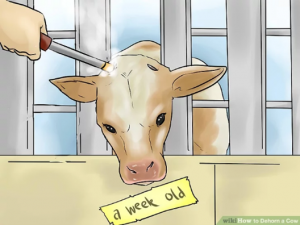BEEF
A machine learning approach for predicting the most and the least feed-effficient groups in beef cattle Shirzadifar, A.; Plastow, G.; Basarab, J.; Miar, Y.; Li, C.; Fitzsimmons, C.; Riazi, M.; Manafiazar, G.
From BovReg (and other projects eg GC Resilient Dairy etc)
Accuracy of genomic prediction of dry matter intake in Dutch Holsteins using sequence variants from meta-analyses Gredler-Grandl, B.; Raymond, B.; Chitneedi, P.K.; Cai, Z.; Panzanilla-Pech, C.I.V.; Fischer, D.; Bolormaa, S.; Chud, T.S.; Wang, Y.; Li, C.; Villanueva, B.; Fernandez, A.; Kuehn, C.; Lidauer, M.H.; Pryce, J.E.; Plastow, G.; Baes, C.F.; Charfeddine, N.; Veerkamp, R.F.; Bouwman, A.C.
Multi-dimensional functional annotation of bovine genome for the BovReg project Moreira, G.C.M.; Dupont, S.; Becker, D.; Salavati, M.; Clark, R.; Clark, E.L.; Plastow, G.; Kühn, C.; Charlier, C.
Comparative analysis of CAGE-Seq across tissues reveals transcription start sites unique to cattle Salavati, M.; Clark, R.; Becker, D.; Kühn, C.; Plastow, G.; Moreira, G.C.M.; Charlier, C.; Clark, E.L.
OTHER BOVINE
Functional SNPs and INDELs within regulatory elements associated with mastitis in Holstein cow using -OMICs technologies Asselstine, V.; Medrano, J.F.; Stothard, P.; Miglior, F.; Karrow, N.A.; Baes, C.F.; Schenkel, F.S.; Cánovas, A.
PIGS
Genome-wide association analyses and genomic prediction for pork meat quality traits using whole-genome sequence Heidaritabar, M.; Huisman, A.; Bink, M.C.A.M.; Charagu, P.; Plastow, G.
Prediction of breeding values for feed intake in pigs using individual versus group records along with correlated traits Zhang, C.; Kemp, R.A.; Dekkers, J.C.M.; Plastow, G.S.; Gao, H.
Multi-trait genomic estimation of genetic parameters for growth and carcass traits of Duroc pigs Akanno, E.C.; Thekkoot, D.M.; Zhang, C.; Bierman, C.; Plastow, G.; Kemp, R.A.
Large-scale cis-eQTL analysis of gene expression in blood of young healthy pigs using PigGTEx Kramer, L.M.; Teng, J.; Lim, K.S.; Gao, Y.; Yin, H.; Bai, L.; Liu, G.E.; Zhang, Z.; Fang, L.; Plastow, G.S.; Tuggle, C.K.; Dekkers, J.C.M.
Indicators of disease resilience from complete blood count and in vitro immunoassays data from young-healthy pigs Bai, X.; Cheng, J.; Fortin, F.; Harding, J.C.S.; Dyck, M.K.; Dekkers, J.C.M.; Field, C.J.; Rogel-Gailard, C.; Blanc, F.; Plastow, G.S.
GBP5 PRRSV resistance gene had no effect on pigs’ infectivity or susceptibility in a trial simulating natural infections Chase-Topping, M.E.; Plastow, G.; Dekkers, J.; Fang, Y.; Gerdts, V.; Van Kessel, J.; Harding, J.; Opriessnig, T.; Doeschl-Wilson, A.
Genetic relationships among immune response traits of young healthy pigs evaluated by immunoassays Bhatia, V.; Schmied, J.; Cheng, J.; Bai, X.; Mallard, B.; Fortin, F.; Harding, J.C.S.; Dyck, M.K.; Plastow, G.S.; Field, C.J.; Rogel-Gaillard, C.; Blanc, F.; Piggen Canada; Dekkers, J.C.M.
Methods and Tools: Software and Computing Strategies
Subsetted orthogonal data augmentation for fast parallel implementation of Bayesian models for whole-genome analyses Chen, L.; Plastow, G.









